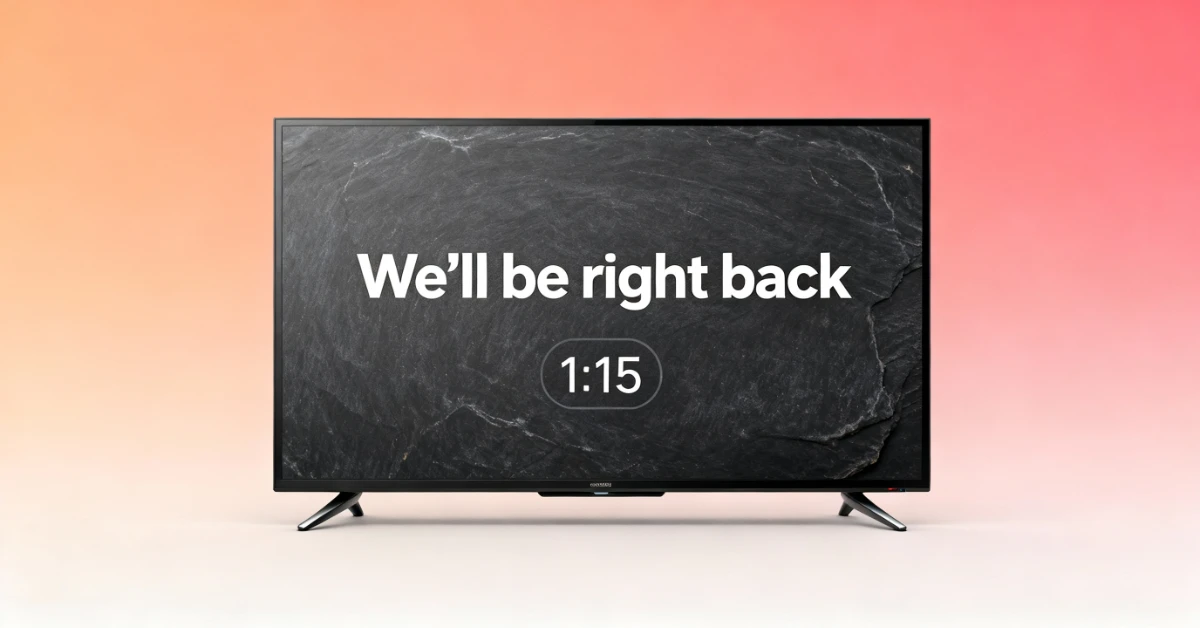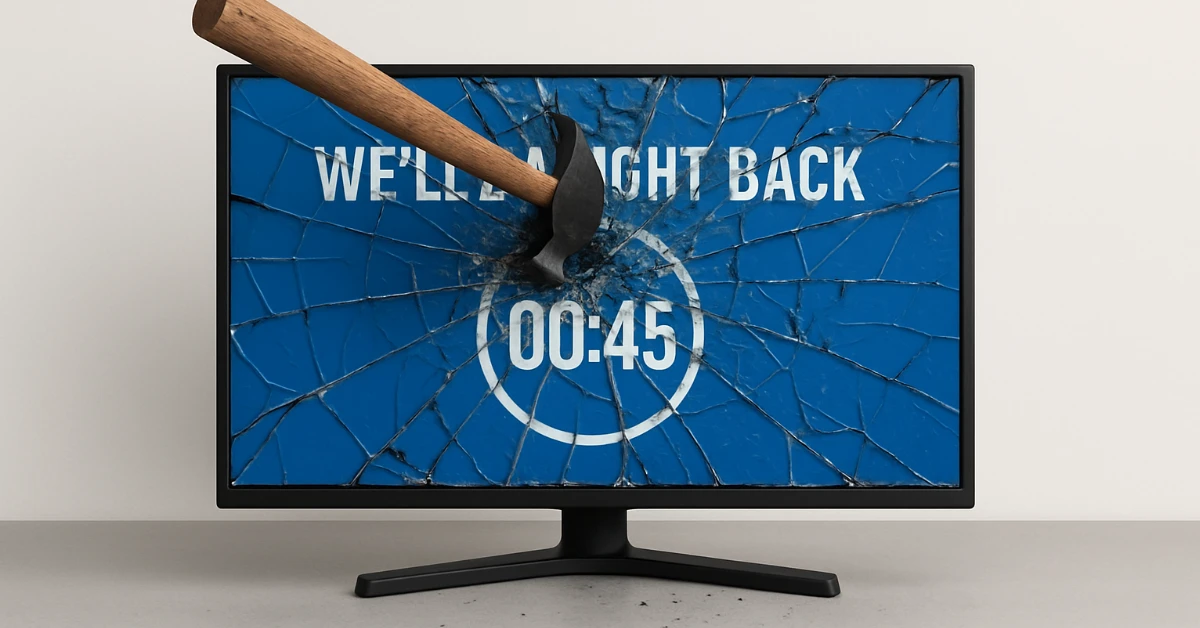
Earlier this year, a media executive reached out before their appearance at an industry event. They were thinking about the best way to address one of the ongoing challenges afflicting content distributors and connected television (CTV) developers that operate free, ad-supported streaming TV (FAST) channels and apps.
“The best part about FAST is that it’s commercial-free,” they quipped.
Ultimately, they didn’t wind up using the line during the event, but the point remains: Launch any of the near-2,000 free streaming TV channels on the market today, and you’re likely to run into an interstitial slate that promises a show or movie will return after a few moments.
The interstitial is the byproduct of a complicated system — or, when you talk with the experts, various complicated systems — by which commercial spots are supposed to hit the glass. In the era of broadcast TV, that system was streamlined: A station sets aside a certain amount of inventory to sell, a team sells that inventory, someone produces the spot and, after the checks clear (or, often, before), the station runs the ad in the allotted slots.
FAST channels operate on a similar premise, but the capabilities of the Internet means there are more variables. The requirements of different platforms — all of whom compete against each other for viewer attention and ad dollars — also complicates things.
One of the cornerstone issues of the CTV ad world is as old as time itself: Fraud. The type of fraud afflicting CTV isn’t too far off from other forms of digital media, like cube and banner ads displayed on websites. Some ad platforms will offer inventory that is characterized as premium when it isn’t, and some unscrupulous publishers will use bots and other automated techniques to create artificial impressions to make it appear as if a person has engaged with an ad. In both cases, buyers lose out — and, if that happens enough, the industry suffers as a result.
Thomas Morgan spends a lot of time thinking about this. At CTV1 Media Services, Morgan and others consult with various stakeholders in the industry — broadcasters, streamers, brands — to tackle those problems.
Morgan feels the strongest way to prevent fraud and track the effectiveness of a campaign is through an open watermarking system. The concept isn’t new, and some ad platforms, like Roku, have developed their own. But the Roku Advertising Watermark only works on “authentic Roku devices,” and similar tools developed by other companies have near identical-limitations — which is why Morgan is working toward a more-transparent system, with a uniform watermark that works across platforms and apps.
“Every ad should go into these different platforms with a standard ad identity — a UPC (Universal Product Code, commonly thought of as a bar code) for ads,” Morgan said in an interview. “Now, it’s hard to put the actual ad ID into the ad spot, so what we’re doing is using an open watermark that allows the advertiser to mark their spot in a protected registry, so it’s not something that is out in the open…but, it’s an open, readable standard where you can watermark once, and read everywhere.
Morgan said the technique improves the way ads are evaluated for effectiveness because it allows for streamlined, impression-based measurement across different platforms.
In the FAST space, that is important, because the programmers of those channels have divided their inventory in sections, sometimes referred to as pods. The amount of time that is allocated to an ad break can vary wildly — some platforms, like Roku and Amazon, have strong conditions on the amount of time an ad break must run, and how much inventory a programmer must allocate back to the platform. Others have different ways of triggering how inventory is put to auction, how it is filled when a bid is successful, and how the buyer is debited for the run.
The complexity means, more often than not, a streamer who tunes to a FAST channel will almost certainly encounter a slate that promises a show will be “right back” — the slate is the byproduct of various platform demands and systems.
By applying a universal watermark that is scrutinized against a system open to all, “you’ve standardized the asset identity, the workflows and everything else,” Morgan said. “Nobody competes on (a closed system) — they (the platforms) may think that they (the advertisers) do, but all you’re really doing is upsetting prospective advertisers.”
Standardization is one part of a broader formula to kill the slate. The other involves creative ways to engage the viewer when ad inventory is filled. On a platform level, a 15-second or 30-second spot is delivered in a targeted way, with different levers — age, median household income, geography and other demographic elements — allowing for more-precise targeting than the conventional broadcast TV spot.
Historically, that is where the magic ends — on a FAST platform, a commercial spot largely resembles the type of ad a viewer might encounter on TV, with few exceptions.

Origin, a creative ad tech group that recently opened its first offices in New York City, is hoping to change that by offering ad buyers a better way to deliver more-personalized and more-engaging spots across FAST and other parts of the CTV ecosystem.
Origin does this with two core products. The first, Aperture, brings the best elements of digital display advertising to FAST and other CTV platforms. It allows brands to add dynamic overlays to their existing ad spots, in a way that is deeply targeted and personalized. That can be useful for beverage companies that want to point streamers to the nearest grocery store where their product is offered, or automakers who want to advertise the nearest dealer.
Aperture can also use push-up bars and split screens to showcase new products or offer a QR code with digital coupons, light boxes that offer timely messaging through layered windows and feature boxes that include more information about a product, service or brand.
The second, Slingshot, involves a custom asset that is wrapped around or inserted into a traditional TV spot. The format can use custom elements that touch on personalization and localization — such as the current temperature in a particular city, if the ad is for a tourism board — or display a desired call-to-action.
Slingshot can also gamify an ad to drive more attention to the screen, at a time when some viewers might tune out. A brand might quiz a viewer at the beginning of a spot, and then reveal the answer once the commercial plays out.
Chloe Morawski, the Head of Agency and Brand Partnerships at Origin, said Aperture and Sligshot are about serving a good ad experience to the viewer as much as it benefits the ad buyer.
“The viewer deserves more than a national/general ad within an ad break,” Morawski said in an interview earlier this summer. “We’re here to help provide a unique, personalized experience for the viewer and, at the same time, unlock a super simple way for the brand to provide that experience without having to produce thousands of versions of an ad.”
The formats have universal application, but it might be particularly beneficial to local TV stations that offer largely-unmonetized FAST feeds of their local news and community-oriented programming.
In the past, many local TV stations aired a “time and temperature” interstitial that promoted a local business — with the downside being that the temperature was largely based on the current weather in the same city as the station, even if it served an area with several microclimates. Origin’s formats can revive that format for the 21st century — Slingshot can do it as an ancillary interactive asset to a longer, traditional TV spot, or Aperture can enhance a spot of its own.
“If a broadcaster wants to monetize FAST and needs to enhance their spots, we could easily help with that — even creating those ad spots for the channels that provide a spot for sponsors to be highlighted on, giving the channels a potential revenue model as well,” Morawski said.
The solutions CTV 1 and Origin offer work equally on other CTV platforms like ad-supported video on-demand (SVOD) and subscription video on-demand (SVOD) as much as they do on FAST. But both are likely to have the biggest impact on FAST channels, where ad inventory goes unfilled and viewers are given little more than a countdown with a promise that a show is about to start again.
By streamlining the process through transparent watermarks and giving ad buyers and content distributors a way to enhance their creatives, CTV 1 and Origin are hoping that the integrity and reputation of the ad buying experience improves, and that the money starts flowing to CTV — because, once it does, the commercial break interstitial will be a relic of the past.
About the Author:
